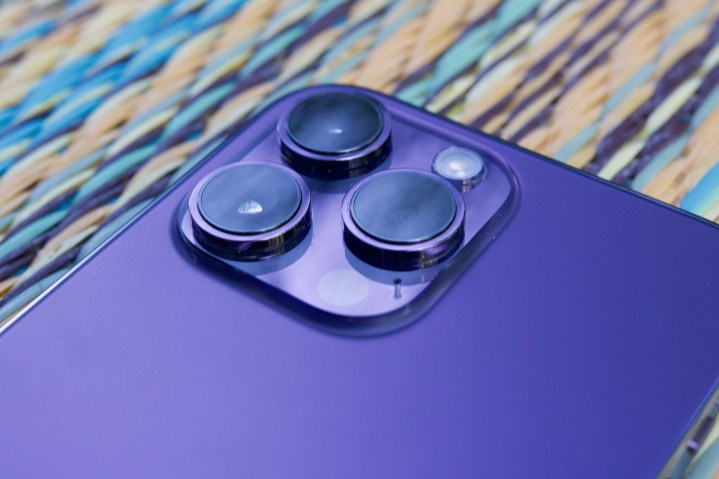
I had a ton of hope when I splurged the equivalent of $1,700 on the iPhone 14 Pro last year, buying into the camera hype of the new 48-megapixel sensor, the snazzy Dynamic Island, and a faster chip. I was sorely disappointed, especially when I looked at the competition and noticed I was missing out on meaningful perks like a folded lens telephoto camera for a higher lossless zoom range. I was not alone in sharing the disappointment.
But then, rumors started floating that the iPhone 15 Pro would finally get a periscope-inspired telephoto camera. Once again, I started mentally preparing myself for another Apple flagship purchase, narrowing my target down to the iPhone 15 Pro for two main reasons. First, because it’s smaller, and second, because it’s cheaper than the Max variant. But it appears that the iPhone 15 Pro won’t get a periscope-style telephoto camera this year, as the zoom camera upgrade will reportedly be exclusive to the iPhone 15 Pro Max.
TFI Securities analyst and reliable industry insider Ming-Chi Kuo writes in a market note that the periscope-style telephoto camera will be exclusive to the iPhone 15 Pro Max, primarily because of the internal space constraint. For the unaware, a periscope camera system relies on an L-shaped light tunnel inside the phone chassis. Instead of having light directly fall on the sensor, the light rays first touch a prism (aka folded lens), which then bends it at 90 degrees and feeds it to the sensor after passing it through a horizontal tunnel of lenses.

This tunnel allows a higher degree of movement for the lens elements and focal adjustment, allowing the sensor to achieve a significantly higher optical zoom range compared to your average telephoto lens. Take, for example, the Samsung Galaxy S23 Ultra, which has a telephoto camera that allows 10x optical zoom and 100x digital zoom, while the iPhone 14 Pro Max is limited to a 3x optical zoom output.
According to Kuo, the iPhone 15 Pro Max’s larger size allows Apple to fit a periscope module, but the same won’t be possible for the iPhone 15 Pro. However, if you dream of an improved zoom camera on a non-Max or non-Plus iPhone, you might want to wait another year. Kuo says Apple is bumping up the screen size for the iPhone 16 Pro, which would allow its designers to finally fit the improved zoom hardware under the chassis. If that happens, both the iPhone 16 Pro and iPhone 16 Pro Max will get the periscope camera treatment in 2024.
An unreasonable disappointment

While the engineering challenges are reasonable, it’s odd that Apple wouldn’t give the redesign treatment to the iPhone 15 Pro. After all, it essentially carries the same design language as the iPhone 11, which would be four generations old by the time the iPhone 15 series hits the shelves. It would make sense if Apple continues with the same fundamental schematics for the cheaper non-Pro iPhones. However, robbing a trim that starts at $999 in the U.S. (much higher in other markets) and keeping it away from a camera upgrade — one that is now a mainstay on all of the best Android phones — is utterly disappointing.
It would be baffling to see that, save for a processor upgrade, the iPhone 15 Pro would virtually be the same phone as the iPhone 14 Pro, while the iPhone 15 Pro Max races ahead with a major periscope camera boost and a higher price tag in tow. So far, iPhone 15 series leaks have painted the picture of a fairly modest upgrade with barely any tweaks in the design department and minor iterative changes under the hood.
But the asking price, well, it could go up for the iPhone 15 quartet or stay the same as the iPhone 14 series. Either way, the iPhone 15 Pro already sounds like a disappointment because one of its most-awaited camera upgrades had been delayed for yet another year. But, at the very least, it should make the iPhone 16 Pro worth looking forward to.



